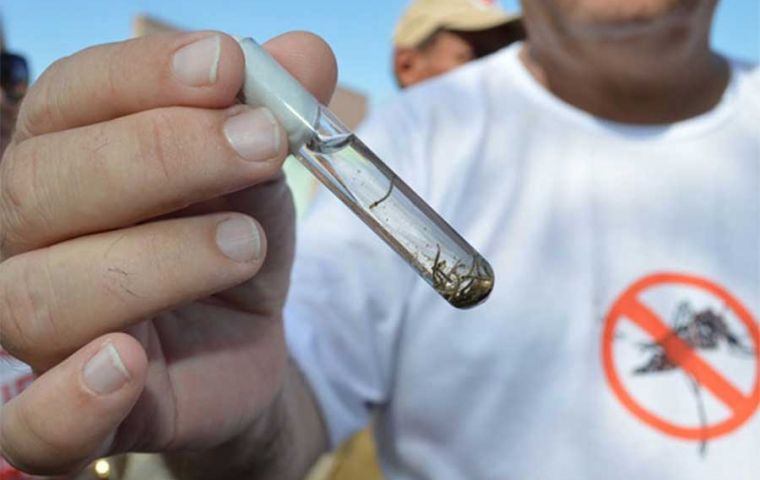MercoPress. South Atlantic News Agency
Brazil tops list of dengue-hit countries in the region

Brazil tops the list of suspected dengue cases in the region with 6.3 of them, followed by Argentina's 420,000, Paraguay's 257,000, and Peru's 200,000, Agencia Brasil reported Monday. In South America's largest country, more than 3 million of these notifications have yielded positive laboratory results.
The data comes from the World Health Organization (WHO), which has already reported a total of 7.6 million probable cases of dengue fever worldwide this year, 3.4 million of which have been laboratory-confirmed. The WHO's monitoring panel also mentioned some 3,000 deaths caused by the disease. Currently, 90 countries have active dengue transmission.
“Although a substantial increase in dengue cases has been reported globally over the last five years, this increase has been particularly pronounced in the region of the Americas, where the number of cases exceeded 7 million at the end of April, surpassing the 4.6 million cases recorded for the whole of 2023,” the WHO said.
The organization also warns that all four dengue serotypes have been detected in the Americas this year in at least six countries: Brazil, Costa Rica, Guatemala, Honduras, Mexico, and Panama.
“In addition, many endemic countries do not have robust detection and reporting mechanisms, which means that the true burden of dengue worldwide is underestimated. To control transmission more effectively, robust real-time dengue surveillance is needed,” the WHO also noted.
The United Nations agency views the dengue vaccine as part of an integrated strategy to combat the disease, which also includes vector control, proper case management, and community involvement. “The WHO recommends the use of TAK-003, the only vaccine available, in children aged 6 to 16 in places with a high intensity of dengue transmission.”
Branded Qdenga and developed by the Japanese laboratory Takeda, the vaccine began to be administered in Brazil's public health system in February this year. Due to the limited quantity of doses, vaccination is restricted to children and adolescents aged between 10 and 14.
WHO data also showed an overlap in cases of dengue, chikungunya, and Zika, all of which are transmitted by the Aedes aegypti mosquito and have similar symptoms. Hence, misdiagnoses may occur. “Surveillance data during large outbreaks of suspected dengue can erroneously include cases of one or both of the other diseases,” the WHO explained
The organization quoted a study carried out in the Brazilian State of Minas Gerais last year, when suspected cases of dengue accounted for 84.4% of a total of 828,654 probable cases of arboviruses, while suspected cases of chikungunya accounted for only 15.6%. “The true proportion of the two diseases among laboratory-confirmed cases was 65.9% for chikungunya and only 34.1% for dengue.”
“Surveillance systems that specifically target the endemic transmission of chikungunya and Zika are weak or non-existent in many countries,” the WHO underlined. “There are important differences between these diseases in terms of risk populations, patient management, and use of health resources,” it added.
The Zika virus is particularly dangerous among pregnant women due to its association with cases of microcephaly. “Expanding surveillance to simultaneously monitor all three viruses can help public health authorities accurately determine the true burden of each disease, refine risk assessments, and optimize clinical management and resource allocation for more effective public health interventions.”
To date, the WHO panel estimates that by 2024 there will be more than 250,000 cases of chikungunya worldwide and almost 7,000 cases of Zika virus.




Top Comments
Disclaimer & comment rulesCommenting for this story is now closed.
If you have a Facebook account, become a fan and comment on our Facebook Page!